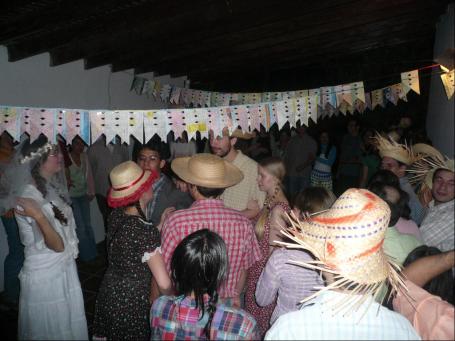Maya Mayblin, Gender, Catholicism, and Morality in Brazil: Virtuous Husbands, Powerful Wives (2010), Introduction, Chapter 2.
Michael Walsh, Roman Catholicism: The Basics (2005), Chapters 3 and 4.
Read about the Synod on the Family:
Catholic News Agency
National Catholic Reporter
New York Times
My students grasped Maya Mayblin’s basic claim that marriage is a challenging and life-changing event for both women and men in Santa Lucia, the Brazilian village where she conducted fieldwork. In the book we read this week, Gender, Catholicism, and Morality in Brazil: Virtuous Husbands, Powerful Wives, we talked about the typical activities associated with men in childhood versus adulthood. The problem, as Mayblin poses it, is that men long for their adolescence, when they spent their days fixing their motorcycles and driving around visiting different festas in the surrounding towns. As adults, they are attracted to work in the fields, mostly around their hometowns. The challenge for men in Santa Lucia is to find experiences that feel satisfying on both accounts. I described an example from my own fieldwork, and challenged my students to say why it would have been a successful instance of mediating this tension.
Here’s the example. One morning in mid-July, I got up early to cut the grass in one of his haymeadows to make hay. He had recently bought a walk-behind mower with a special feature. You could attach a small wagon in the back for passengers and ride it like a motorcycle. We spent an hour fine-tuning the mower-motorcycle before we were ready to go. The mower-motorcycle made an impressive noise, and we proceeded to speed through the main road in the village out to my neighbor’s haymeadow. We spent the rest of the morning cutting the grass before riding back into town.
My students understood the idea that this machine allowed my neighbor to enjoy both the pleasures of youth and adulthood, as they are understood by men in Santa Lucia (and in Hungarian-speaking villages in Romania). He could enjoy the speed and mobility of an adolescent man while still making sure the village knew he was a responsible adult going out to cut the hay in his fields. Coming up with our own examples to challenge our students to take an argument “outside the text” is a valuable exercise. There are probably any number of examples that instructors in the field of Global Catholicism could come up with that would illustrate the way gender, culture, and life-cycle dynamics overlap in Catholic communities.
Another example I will point out to my students later on, in Week 10, is a bit closer to home. I described this example variously as an “artful solution,” “mediating a tension,” and “splitting the difference.” I plan to bring up this example later on when we read Hillary Kaell’s book about the “middle-old” women who go on pilgrimage to the Holy Land. Generational and life-cycle differences are at play in her book, as well. Kaell talks about how Holy Land pilgrimage “mediates tensions” in contemporary American Catholic life: the middle-old women she interviews feel a desire to be active Catholics like their children, but they are reluctant and physically unable to take part in the programs popular among young Catholics: mission and service trips in distant countries. Holy Land pilgrimage is a ritual that allows them to be both active Catholics while also doing something that feels appropriate to their life stage.
